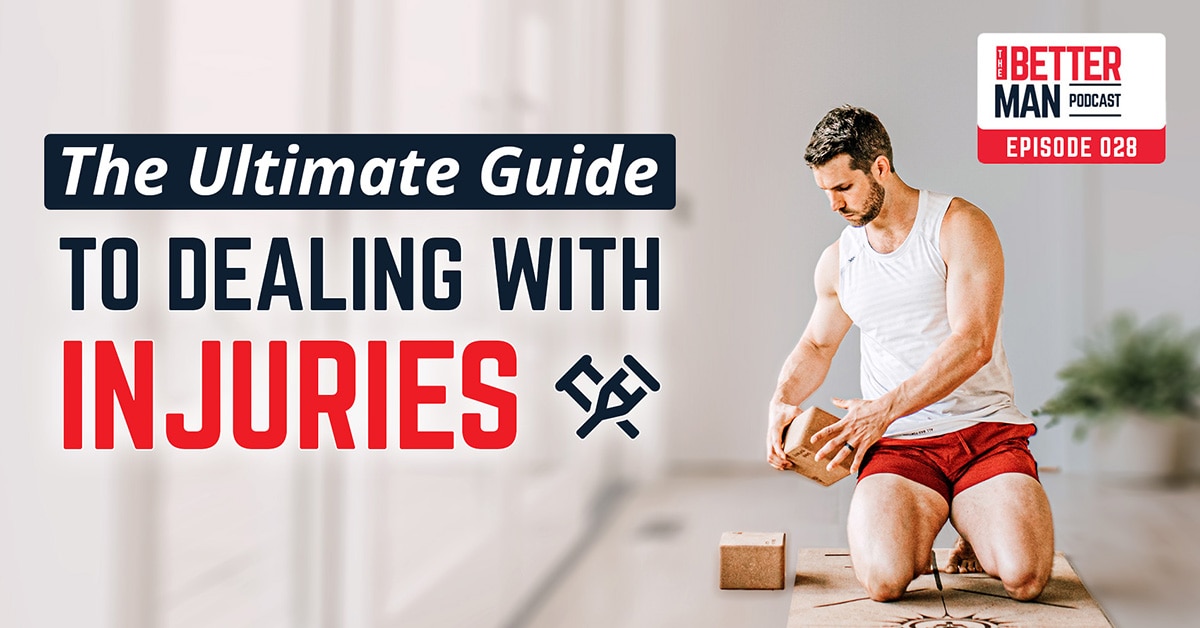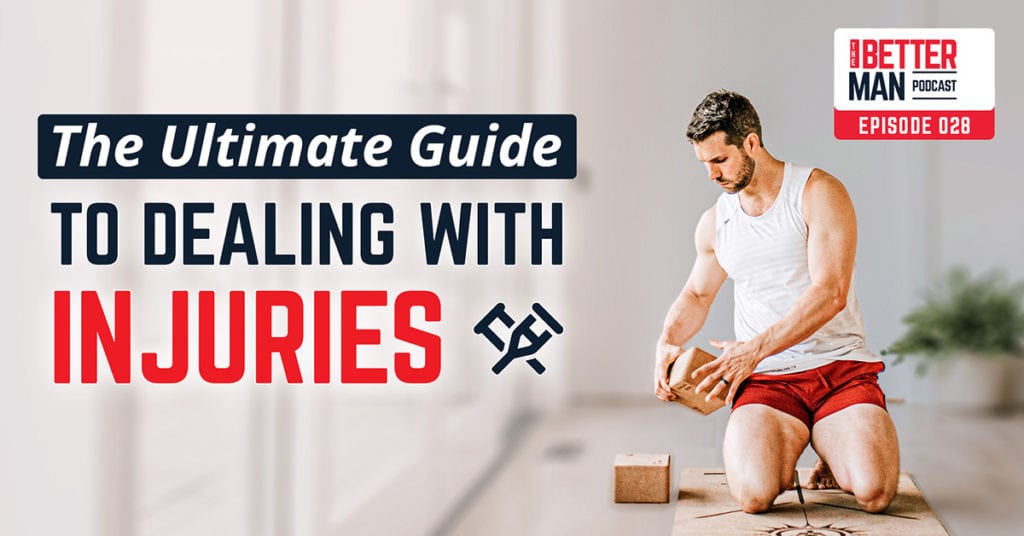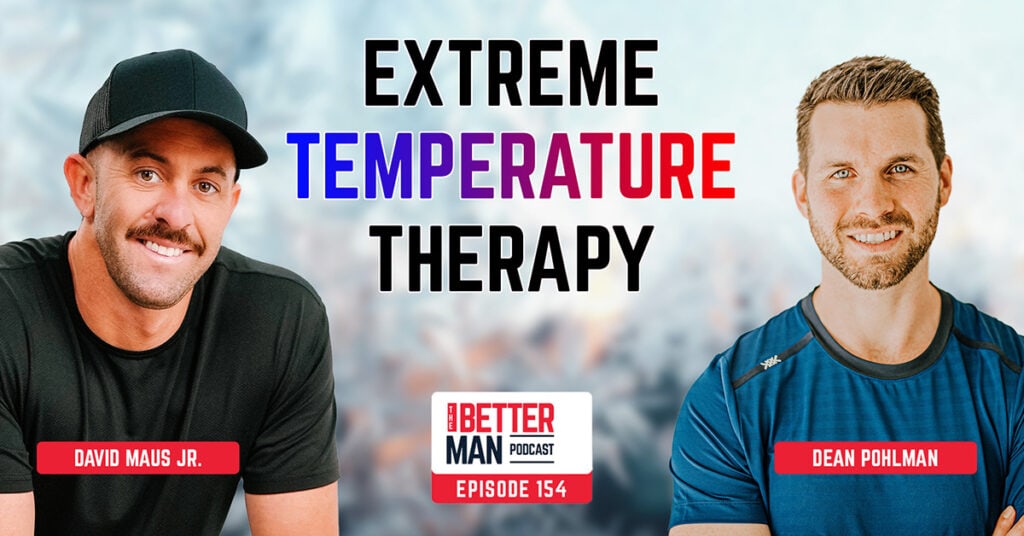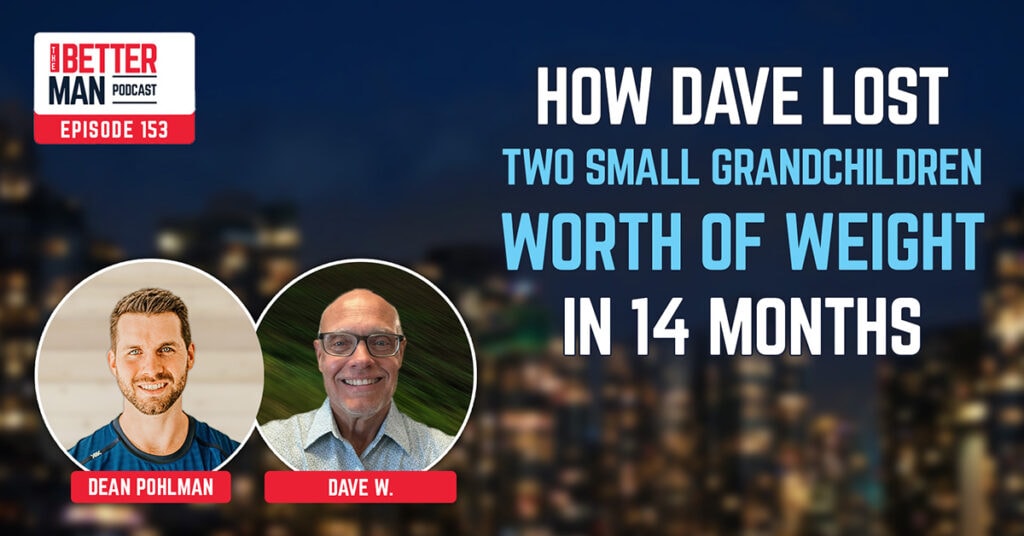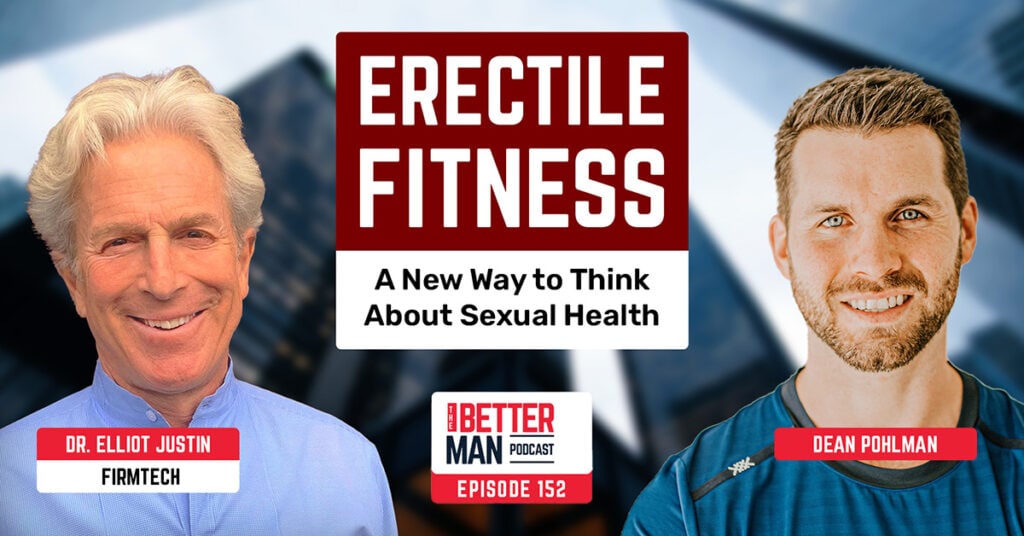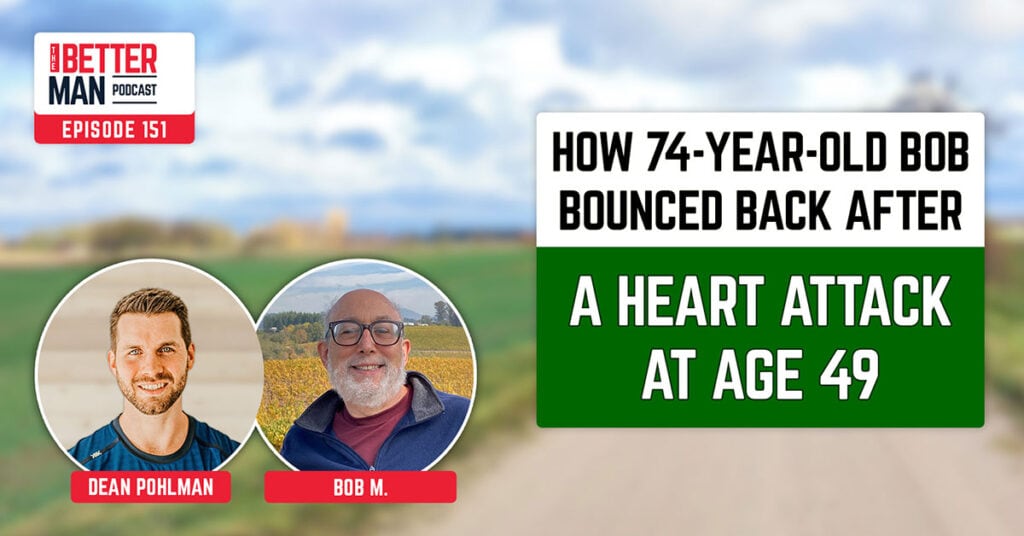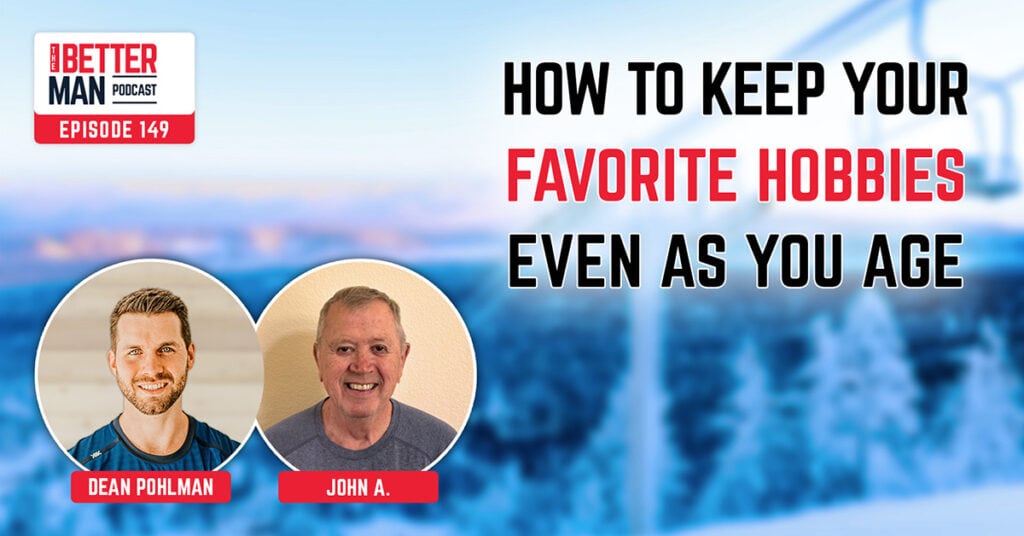Nobody likes getting injured. They wreck your routine, undermine your mental health, and stop your progress towards your fitness goals.
But they’re a natural part of working out. And when you understand why injuries happen, they can actually be an opportunity for growth.
For example:
When I was 11, I had a recurring patellar subluxation in my knee that lasted until long after I graduated from college. Surgery at 16 didn’t help. Wearing a knee brace throughout my collegiate lacrosse career didn’t help. Then, I had a terrible episode at the World Lacrosse Games, which kept me sidelined for months.
This injury coincided with the start of Man Flow Yoga. In fact, it’s one of the main reasons I created the Strength Foundations Challenge. If you’ve been through that program—or Man Flow Yoga’s Bulletproof Your Knees course—then you know that we focus on your hips and ankles more than your knees.
Why?
Because the site of your injuries isn’t the root cause of your injuries. This mindset shift changed how I approach injuries forever. And in this episode, I’m sharing everything I’ve learned about injuries with you.
You’ll discover a few more mindset tweaks that keep your progress moving forward (even when you’re injured), how injuries reveal “unusual” weaknesses, and the best way to recover from injuries, so you heal faster and prevent future injuries.
The Better Man Podcast is an exploration of our health and well-being outside of our physical fitness, exploring and redefining what it means to be better as a man; being the best version of ourselves we can be, while adopting a more comprehensive understanding of our total health and wellness. I hope it inspires you to be better!
Watch a Clip From Episode 028

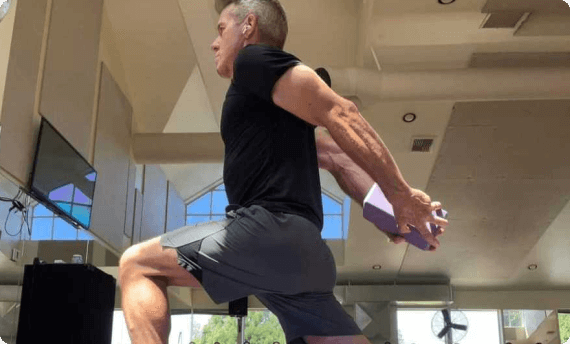
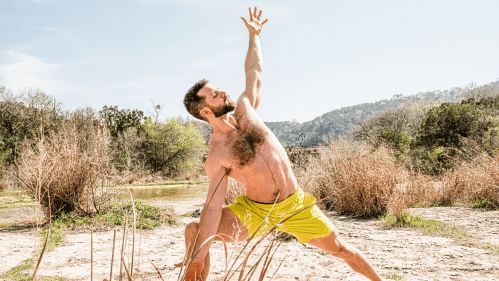
Key Takeaways with Dean Pohlman
- Why injuries are a normal part of working out (and how to use your injuries as an opportunity) (2:02)
- How exercising through minor injuries actually accelerates the healing process (3:06)
- The simple “prevention” mindset tweak which dramatically reduces your risk of minor, soft tissue injuries (8:18)
- Why realizing your body will recover from injuries—even gruesome ones—jump starts the recovery process (8:55)
- The weird way past injuries motivate you to exercise today (even when your life’s chaotic) (13:52)
- How a knee injury when I was 11 inspired Man Flow Yoga’s Strength Foundation course (17:13)
- The counterintuitive reason the site of your injury isn’t the root cause of your injury (18:01)
- Why the “RICE Method” of healing is backwards (and the proper way to recover from injuries faster and prevent future ones) (22:19)
- How your hips and ankles are the two biggest culprits for your knee pain (25:27)
- 3 simple ways to tell if you’re in pain or just dealing with discomfort that you need to push through (29:07)
Hey, guys, it’s Dean. Welcome to the Better Man podcast. Today is a solo episode, and I’m going to be talking about injuries, physical fitness, injuries, and what we can do to better work through them, how we can use them as opportunities. Mindsets we should have when dealing with them. How can we use them as learning experiences to reveal our weaknesses. How do we work around them in terms of exercise. How do we continue to exercise when we’re injured because we don’t want to stop. So this is just all about injuries and everything that I could possibly think about injuries in a single, so a podcast episode. So I think you’re really going to get a lot out of this one.
All of us deal with injuries and time to time, even me, I’m going to have minor injuries from you know, injuries from time to time. It’s just a result of working out. And so and I’ve also just had injuries growing up, you know, being an athlete, not understanding the specific aspects of my fitness that I needed to work on in order to stay injury free. And that’s where a lot of the, you know, looking at injuries as areas of opportunity to learn about weaknesses fits into my viewpoints on injuries. But anyways, I’m going to go through this episode. I think it’s gonna be really helpful for anybody who works out and, you know, still gets injured from time to time because it’s just a normal part of working out.
So injuries are not the end of the world and we are all going to deal with them for working out consistently, especially if you have performance goals. If you’re pushing yourself, you’re going to go beyond your limit from time to time. But for most of us, being injured doesn’t mean you have to work out or to stop working out entirely. You just have to modify what you’re doing. So in this so episode I want to talk about a better way to view injuries as learning experiences, number one, as opportunities to work on our or on our weaknesses. And also a way for us to appreciate when we are not injured, to give us more motivation to work out when we are able to do it.
And then I also want to give you some practical tips to exercising with or around injuries, including how to use pain as an indicator of whether or not you should be doing something, what is pain versus discomfort. And then also with most injury, with most injuries, not major ones, but with minor injuries like muscle tears or strains, you want to continue to working out. You’re not going to be able to do everything that you wanted to do or what you’re used to. But there are definitely things that you can do and you just might need to you might just need to figure out what those are. And I’ll explain some of the process for figuring that out. And also what’s cool is that some of those things that you can do might even help you address the weaknesses which have caused that injury in the first place.So here we go.
So before I really get into this, I just want to thank everybody who messaged me last week in response to some of the post I made, as well as that solo podcast episode in which I mentioned dealing with the haters. I don’t want to draw your attention to it or talk about specifics, but I just want to say that I really appreciate your support. It’s really great to hear how man flow yoga has helped people with their fitness goals and beyond. And ironically, even though we talk about mental yoga as a non spiritual workout, the way we do the workouts focused on our breathing, focused on our body. It allows people to become aware of themselves more so than they would even maybe even more so than they would in the yoga class That’s been described as spiritual. That is to say that if you are doing yoga and you have noticed the benefits of it beyond a physical level, that’s awesome and I’m glad you’re getting that out of it. I know for me the way that I do yoga is the way that I instruct it. So what you’re doing, you know, the workouts that you do with me, that’s kind of what’s going on in my head. As I’m doing yoga, very often. And I notice those profound benefits that come to my day as a result of focusing on my breath and on my body, thinking more clearly, feeling more calm, feeling more focused, reducing the chatter in my head. And if you want to call it spiritual or not, I don’t really care.
But yeah, so I also want to mention that we started doing live community chats and these our members only chats in the Man Flow Yoga members area on the website version every other Tuesday at 12 p.m. Central. So if you’re listening to this podcast, the day that it came out or a few days afterward, we’re going to be doing a live broadcast at 12 p.m. Central, the Tuesday following its release, which is going to be the 25th as of now, October 25th at 12 p.m. Central. So join me then and just so that we have kind of a, you know, a common ground to have this discussion on, I thought it’d be interesting to have those discussions center around the topic of the previous week, So a podcast episode. So on October 25th we’re going to be talking about injuries, so come prepared with injury questions and we’ll go through that.
Lastly, I do want to say that we put out a great podcast episode last week with the Fit Father Project. If you are interested in a weight loss program and I say that in I say that in every way possible to not mean a traditional weight loss program because I think most don’t work. You know, I had a guy reach out to me and tell me why weight loss programs don’t work. And the reason why they don’t work is because they are only focused on giving you a nutrition plan and maybe an exercise thing to follow, but they don’t get into any sort of habit science. They don’t get any any sort of mindset into the mental side of it. And this is really what sets the fit, the fit father project apart the the creator of this program, Doctor Anthony, is a good friend of mine. We’ve gotten to know each other really well over the last year, and I’m really excited to be promoting his program with Man Flow Yoga. So if you wanna learn more about that, you can also get an exclusive discount on that. You can go to a FitFatherProject.com/MFY to learn more.
All right. Let’s talk about injuries. So let me start this off by saying that I have had so many injuries I’ve had to deal with them since I was six. The first time I had a major injury, I broke my wrists playing on the monkey bars. I was six years old. I had broken fingers all throughout elementary school, broken middle finger, broken index finger. I mean, I dislocated my pinky one year. There were just all sorts of injuries. We collected my casts. I don’t know why, but I had a collection of casts. One of my one of my more painful injuries was a I broke three metatarsals. That is a bone in your foot. I broke three of them when I jumped off the stairs. I was a young stuntman. Of sorts. And yeah, that was one of the more painful ones. But so I’ve I’ve learned to deal with injuries. It’s just something that happens and I have learned to work with them. But it took me a really long time to get to the point where I could be more optimistic about injuries. And a lot of those injuries that I mentioned, those are blunt force injuries more. So what I want to focus on in this podcast is, is injuries that are preventable. Soft tissue injuries like like like minor early minor muscle strains or tendon strains. You know, we’re talking first or second degree little soft tissue injuries because we can most of those are preventable. You know, unless you are a high performance athlete. A lot of those injuries are really preventable. And so it took me a while to figure that out. But once I got that mindset, it made things a lot more helpful. And that’s what I want to share with you.
I also want to help you work through the you know, the discomfort and the frustration that happens when you are injured because it sucks not being able to do your typical workout, especially if you struggle to establish an exercise habit and you know, you get injured and then you can’t do what you worked so hard to establish. Maybe you’re worried about gaining weight again. Maybe you’re worried about, you know, all of those. Maybe you had just maybe you just your life just wasn’t as good when you weren’t exercising and you’re concerned that, you know, you’re not going to be able to do it. So one thing that I want you to understand and embrace as you’re going through injuries is that they are temporary, you know, and it might feel in the moment that you’re never going to get better and that things aren’t improving quick enough. But that’s just not true.
Most injuries are going to recover from. And while it may well, it might take you some time to figure out what that injury is or what those underlying causes are, once you figure that out, you’re going to be able to do the appropriate exercises, you’ll have an estimated recovery timeline and you’ll look forward to being better as long as you follow that process and you don’t rush it. A good example of this was is pro sports. And I was thinking about this last week, but, you know, it’s football season here in America. And those guys get injured every week. Right? You hear about, you know, ACL tears. You hear about, you know, fractured bones. There’s there’s some truly gruesome injuries that happen there. But, you know, right next to it, right next to their injury, they say like expected recovery time, six weeks or expected recovery time, six months or out this season. We’ll be back next year. And these are injuries that for many people would be you know, they would be they might be lifelong injuries. But my point is that these guys have recovery down to a science and that is to say that injuries are temporary and you’ll recover from them as long as you utilize the available resources to you. And I’m you know, I’m mainly speaking to a specific audience here that has access to proper, you know, proper medical care. But, you know, if you seek out the right experts, then you’re going to be able to diagnose what that injury is. You’re going to figure out the right exercises to recover, and you’ll just follow that plan.
Another component of the injury mindset is I want you to get out of the the I’m special or the entitled mentality. And most of us are like, well, there’s no way that way that I’m part of that. But as it relates to injuries, this is the mindset that says these exercises might work for other people, but they don’t work for me. And this is this idea that your situation is somehow so bad that it can’t possibly be safe. And I’m not I’m not going to say that, you know, there aren’t some injuries that are on the extreme level, but for the most part, we can recover from injuries. We just we need to get out of that excuse mentality where, you know, where, where, where, where we’re adopting the victim mentality and where we’re just relying on that because it it’s it feels good to be able to excuse excuse ourselves, like, oh, you know what? I can’t recover because, you know, my situation is just so much worse than everybody else. And not saying that it’s not, but if you can move away from that mentality, then you’re going to have a lot better time recovering.
It’s easy to excuse ourselves when it gets harder. Uncomfortable when we’ve been trying something for a few days, but not long enough to really see the results and then to say that it’s not for me, quote unquote, and we do this without even realizing realizing it. So I’m here to say, hey, the trick is to look at this differently and the way that I think about it, whenever I’m injured. Hey, there are probably millions of other people who have had this injury in the past, the exact same injury. And if many of those people are able to come back from it, using the right exercises, the proven process, just, you know, a consistent positive, it doesn’t even have to be a positive mindset. You know, it just means that you can come back from it.
And that’s the last part that I want to touch on is that, you know, it’s it’s it does suck when you’re injured, you know? So I don’t want you to like I don’t want you to just I don’t want you to just, like, pretend to be positive all the time. Like, hey, it sucks. Like, give in to that and say, like, hey, I’m frustrated. Acknowledge your frustration. Right? Part of the Better Man podcast is about not denying these emotions that come up. So I want you to acknowledge your frustration. You can journal about it. You can talk about it with close ones, loved ones, your friends, therapist, maybe. But I also want you to understand that there are some you know, I want you to understand that there are things that you can do, that this is temporary. But, you know, I think there’s just a better way to deal with this.
Last part I want to say about this is that if you are injured now, you might it might be helpful to think about how much better it was when you’re not injured or the other way around. Let’s say you’re not injured. I want you to appreciate how much better it is that you can actually exercise right now. I think back to a time when you were injured, how much that sucked. So basically what I’m saying here is that it’s it’s really nice to be able to exercise. And if you can compare that to a time when you were not able to exercise and you can remember that and feel that pain and then and then when you do feel good enough to exercise and really appreciate that, you’re going to be more consistent with your workouts when you are able to work out. You know, I know for me, I just have I know that I’m not always going to be 100%. So for instance, for me, like when I’m able to record workouts, I do it. I’m like, you know what, I’m might be a little tired today. Maybe I’m not feeling it right now, but hey, my body is working. I’m able to do this. Let’s do this thing, you know, so being injured can help you appreciate when you’re not injured. So that’s that’s another thing.
All right. Now, I want to I want to talk about kind of one personal experience that I had that was just really, really painful for me. It was a recurring issue. And you might be able to sympathize with this, but specifically, it was a knee injury. It was my right knee. And I experienced this from I think it first started when I was 11 years old, and it continued all the way up through my collegiate career, collegiate lacrosse career and then even beyond when I was playing for Team Turkey in the world lacrosse games. So basically I had recurring patellar subluxation, which means my kneecap would kind of go in and out of place because I had loose tendons.
So I had surgery when I was 16. I thought that that was going to solve the issue. You know, I thought, oh, it’s just, you know, the knee is the problem. It’s not my hips, it’s not my core, it’s not my ankles, my knee is the issue. I just need my stupid knee to be fixed. So I had surgery, I put a brace on it and I thought, OK, now I’m great. And I wore that brace all through high school, all through college, and it didn’t prevent me from from getting injured I would still have you know, it’s sometimes it would be minor, sometimes it would be a little worse. But I had, you know, those those little episodes all through high school college was really frustrating. And then I had it… And then the worst time it happened was actually out of college when I was playing with the team Turkey and the world lacrosse games. And it was just a really it was a really bad episode where the kneecap, you know, came out partially like it always does. Probably took some bone with it, just a just a more serious strain of those tendons. And I was out for months and months. My whole right leg severely atrophied. I had a significant amount of fluid that had to be drained. I had to go to a, you know, an orthopedist and have that fluid drain because it swelled up so much. There was the patellar bursitis, the knee was swelling and and I had pain for six months.
It sucked. And I’ll be honest. It was also because I wasn’t doing the right recovery exercises. I was also still in the early stages of man flow yoga. So I had to do yoga. I had to do workouts despite my knee not being ready for it. And then eventually I started the rehab process and it was actually part of this experience led me to create the Strength Foundations Course, because I was really learning firsthand about all the exercises that I really needed to do to stabilize my knee. You know, it was hip work, it was core work, it was ankles. And that was all the stuff that was preventing me from from having stability and more being more injury resistant in my knees. And I know that lots of guys have that issue. Lots of guys have knee pain. So it’s better to address that issue now before it gets worse because it always sucks when it gets worse.
You know, that’s a big part of fitness is addressing problems before they get worse and doing something before it gets worse. So anyways, it wasn’t until I really got older when I was well into my collegiate athletes days that I realized that the site of my injuries wasn’t the cause of the injury. And that is to say, my knee wasn’t the problem. It was all the stuff that was connected to it. And once I realized that I stop wishing that my knee would get better, and I actually started working on all the parts that function with my knee, my hips, my ankles, my core. And this for me, unlocked a completely new way of looking at injuries. I now understood them to be revelatory or to reveal weaknesses and even though being injured limits the options of what I could do, I was very often able to work directly on the weaknesses that caused the injury while injured so for example, you know, when I had those injuries that that injured knee, I was, a lot of my recovery exercises were focused on hip strengthening, and they would isolate specific muscles in the hips without putting strain on the knee. And it was that was exactly what my body needed to get stronger and to prevent that injury from occurring in the future. And that’s that’s something else that’s really important to understand. Is that if you have experienced a soft tissue injury as a result of improper technique, overuse, maybe it’s a muscular imbalance, a lack of mobility, or just a general weakness. You not only need to get to the point where you were when the injury recurred. So you not only need to get back to that level of strength mobility that you had when the injury occurred, you have to get above that level because if you where you were wasn’t strong enough, right? That’s why the injury happened. So we need to get even stronger and way stronger than where we were when we got injured in order to have a more, you know, in order to really lower the likelihood of that injury recurring in the future.
And this is to say, that you can’t just wait for that injury to heal and then go back to what you were doing because you’ll probably get injured again. You have to address those underlying weaknesses and build strength in the deficient areas in order to avoid injury in the future. So, you know, if you look at injuries in this way, maybe we can appreciate that the injury wasn’t as bad as it could have been later on, maybe most likely not, you know, when you’re injured. And that sucks. But, you know, maybe we can try to try to embrace that a little bit.
All right. So now that we understand that injuries reveal weaknesses and that they give us an opportunity to work on those weaknesses, we we want to we want to exercise. Right. But maybe you’re still scared to exercise because you don’t want to get reinjured or make it worse. Now, this is a really common concern I can’t tell you how many people who I speak with who have general back pain, and I’ll just use back pain as the example because that’s a really common source of pain. But I can’t tell you how many people who email me who ask questions or who say, oh, you know what, I don’t want to start yet because I’ve got back pain. And the reality is that most back pain isn’t going to go away unless you start exercising. There’s a lot of different types of there’s a lot of different principles that you want to follow when it comes to certain injuries. And we’ll get into that a little bit. We can talk about shoulders and knees and hips and core and back because that’s those are the big ones.
But when it comes to your back, that’s something that you really need to exercise in order to help with recovery. It’s not going to go away unless you do something. That pain that you’re experiencing in your back is being caused by a weakness. It’s also a symptom of your day to day habits. So if you do nothing, if you change nothing, it’s unlikely that your back is going to start feeling better. The trick here is to find the appropriate exercises, the one that will help you get, the ones that will help you get better. But without aggravating your existing injury, and I’ll talk about that in a little bit. So just just stick with me.
But a few decades ago, this was the preferred treatment plan for injuries. You rested and you allowed the injury to heal. You basically did nothing. Eventually we realized that this wasn’t the best way. It’s much better for you to continue to exercise modifying however necessary, but not avoiding exercise altogether. And one big reason for that also has to do with all of the physical and mental benefits that come from exercising. It’s going to help put your body’s natural process in a better state. They’re going to function better. You’re going to have less stress, less anxiety, you’re going to sleep better, you’re going to have a better mood. And when those things are doing better, you’re also going to recover more quickly.
Just a little side note here to strength training actually used to be something that was only done by people who were injured. And then we realized that strength training is really good for us. And everybody started doing strength training. But but but part of the part of what what what evolved as recovering from injuries was using weights to help with building strength. So I thought that was just interesting. Interesting. Because a lot of us, you know, we associate we think we’re injured and we can’t lift weights when reality that was that’s a really good way to help us recover and build strength.
So another big reason that the in that injury is helped by exercise is that blood flow and movement helps injured areas recover more quickly. So we want to do exercises that target the muscles, the appropriate muscles to send blood to those areas to bring a new nutrients and flush out the old dead cells it might not always be easier comfortable, but it’s definitely going to help you recover more quickly. We don’t want to and we do want to make sure that we’re not hurting ourselves. So there is kind of a level of discomfort versus pain that we want to be aware of as we’re doing this.
So how do we figure out which exercises we can do while we’re injured? So some of this is obvious you know, like if we’re injured in our upper body, then we can do lower bodies. Or if we’re injured in the lower body, then we can do core exercises and upper body work as long as it’s not putting any strain on whatever’s injured in the lower body. So, yes, it sucks because we have fewer options but we still have options. We also need to figure out the specific exercises that are going to help address those weaknesses that caused the injury in the first place. Kind of like we talked about before. And for that, you do need to have a pretty thorough understanding of physical fitness since most of us don’t possess that specified knowledge. Then finding a professional like a physical therapist or physiotherapist is a great way to make sure that you’re doing the appropriate exercises and not injuring yourself further.
And then there are also a lot of general or more common injuries that someone like myself would have knowledge of, of how to recover. For example, on a general level, many common injuries are indicative of groups of weaknesses so let’s take the knee because we talked about that a lot. So knee pain, our instability is caused by a lack of strength and mobility in the hips and the ankles. Shoulder pain is often caused by a lack of shoulder mobility and weak scapula stabilizers. Those are the muscles between your shoulder blades. Back pain is a combination of strength and the hips, the core and the spine, as well as hip and spinal mobility.
So if you have pain or discomfort, that tends to flare up with exercise, then you can use these guidelines to shore up those weaknesses and that can help you to prevent a more significant injury or pain from occurring. So that’s for more, you know, general pain or minor, weak minor injuries. But if you’re already past that point and you have a specific sharp pain that really prevents you from doing day to day stuff or your exercise, that’s when I would make sure that you go to an expert who has more specialized knowledge and can direct you to the appropriate exercises for rehab. Sometimes they’re going to have to see you in person to properly diagnose you. Other times, it’s a very recognizable injury, and the symptoms are familiar enough that they can reasonably diagnose, diagnose you based on what you’re saying, and then give you the appropriate exercises. If you’d rather be safe than sorry, then I’d just go see a physical therapist.
It will also save you a lot of time, potentially a lot of pain. Note that I am biased here. My wife is a physical therapist, and a lot of what I’ve gone through as as an injured athlete has been working with physical therapists. So I respect the work that they do. We’ve also developed Man Flow Yoga, has developed back pain relief programs with physical therapists. We actually work the Texas Texas Physical Therapy Specialist to create a series of yoga workouts and flows that help with relieving back pain and also addressing its root causes. That’s one of the that’s one of the main programs that we direct people to when getting started with Man Flow Yoga, especially if you have especially if you have consistent day to day back pain.
On a personal level, I am very familiar with many injuries and exercises that are appropriate for rehab for the above mentioned areas. On occasion, if someone does come to me with a specific plan, or a specific pain that doesn’t track with my existing knowledge, that’s when I’ll probably go to my wife. The physical therapist, she’s got a crap ton of, of, of, of letters after her name. She is a board certified… I’m blanking on what it’s called right now. She is a physical therapist, doctor of physical therapy, board certified orthopedic specialist so yeah, quite a mouthful, but she’s she knows a lot. So I’ll go to her if I have questions to help better understand what’s going on. And there’s also a usually something in the Man Flow Yoga Workout Library, or even a specific program that I’ve designed that will help with certain injuries to make sure that it doesn’t make them worse. And even though you might have to modify some of the poses or leave some out entirely, it’s still going to be really helpful for, you know, being consistent with exercises and not having to drop exercise entirely.
So now that, you know, a little bit more about how to how to exercise for recovery, now we need to make sure that we’re not making it worse. And this is where it comes down to embracing this general principle of if it hurts, don’t do it. And for that we need to understand the difference between discomfort and pain. And discomfort is often necessary when it comes to growth. So, you know, pushing yourself feeling sore doing things even when your body is like, oh, that might be hard, you know, that’s discomfort. And we’re going to need that to get stronger.
Pain, however, is almost always detrimental, and it will delay your recovery by days or weeks just depending on the injury. So, you know, if you’re experiencing sharp pain while you’re working out or a stabbing sensation, that’s a sign from your body that says, no, don’t do that. If you keep pushing through it, you’re going to delay your recovery. If you’re 21, you might delay your recovery by two days. If you’re in your fifties, you might be looking at two weeks. So, you know, there is that to consider as well. And as you get older, we need to make sure that we’re not doing things that are messing up our body. So a lot of.
So how do you tell the difference between the two? A lot of that is just going to take time and practice if you’re unsure. A good way to tell is how you feel a day or two afterwards. If there’s just a little bit of soreness, it’s likely that you didn’t make it worse. But if it’s two days afterwards and there’s still significant tenderness and it feels worse than it did before, and particularly if you feel it in your joints, like if you don’t feel your muscles but you feel it more in your joints, that’s probably a sign that you overdid it and you push yourself beyond discomfort and sometimes it doesn’t even feel like discomfort in the workout. So again, like I said, a lot of this is going to be kind of just developing that intuition of understanding when it’s too much and when it’s not enough.
Pain is that sharp stabbing sensation that’s your body telling. You know, discomfort is more of this is hard but it’s not painful and super localized. An intense stretch is not pain, nor is muscle fatigue, but joint pain, sharp tinges or things that make you grimace significantly. These are what I classify as beyond discomfort. If you’re using a one to ten scale, you want to stay maybe five or below, maybe even four below, maybe six or below, just depending on, you know, just depending on how tolerant you are to pain or discomfort but again, this is going to be something that you have to develop and practice on your own.
All right, so we’ve got our we’ve got our exercises. We have a better understanding of how much to push ourselves. So now it’s time to get to work. The name of the game here is going to be patience and consistency. You’re probably going to learn this lesson yourself, but many of us are going to jump the gun on our recovery and jump into something too soon. This is something that happens with me all the time. I think, Oh, I’m ready. Let’s get back into it. I’m going to go 100%. And then I get humbled and I’m like, Oh, great, OK, now I’m back to where I was two weeks ago. Great. So this is OK. It happens. You’re human. It’s normal. It’s a good reminder about the importance of taking it slow. It’s also good ego check to tell you that, hey, you’re you’re really not that special. You have to go slow to depending on the severity of the injury. Your recovery time is going to vary. Some minor muscle strains might clear up within three days, while some more serious you know, muscle tears are strange, could take years. Or surgeries. The principles with recovery are the same for each.
So one quote that I really like to think about a lot when I’m working out and also when I’m trying to work through, you know, a little minor injury of some sort is that Rome wasn’t built in a day and it prevents me from expecting to fix myself, what with one Herculean effort of a workout. You’re never going to fix your body with one workout. It’s going to be just a little bit every day consistency over heroics. As Kelly Starett would say. We had a great podcast episode with him. He was, I think, the second a first or second guest. So go check him out. He’s awesome.
So so you have a very measured progression to your workouts, right? You’re not like trying to jump from point A to point Z. You’re just going very slowly. You slowly increase the sets, the reps or the weight. You don’t all of a sudden start doubling or tripling what you’re doing in a workout. You also don’t want to dramatically change the workout because if you feel worse the next day, you take longer to recover. You want to be able to identify what delayed your recovery or what made things worse. So if you you know, you only change your workout slightly the next day or the next week and you introduce one exercise at a time, then you can say, OK, it was this new exercise that did it and then you can, you know, better understand what you what you should be doing. And and following in subsequent workouts.
In general, And this is a really good principle to follow that I’ll tell you right here. But in general, as long as you focus on what you can do without pain, the number of movements that do cause pain tends to go down. So maybe you have difficulty doing lunges, maybe your knees hurt when you do lunges. Well, the cool thing about that is if you start doing lower body exercises and core exercises that don’t aggravate your knee, you might be able to come back to a squat in a couple of weeks or a month, and all of a sudden that squat feels a lot better than it did before. So you want to make sure that you are not just gritting your teeth and rushing, you know, and just pushing through exercise does that hurt you. You should be able to appreciate the challenge of the exercise. You should feel your muscles burning, but you don’t want to feel pain you know, if you’re doing an exercise and again, all you want is for the exercise to end, you’re probably doing something you shouldn’t.
In terms of how you feel the day afterwards, muscle soreness is fine, so you might feel stiff and tender to the touch, but that’s not a bad thing. But but if you do have sharp pain or your joints ache when you’re not when you’re not doing anything or just laying around, that might be a sign that you did too much. But again, soreness is not bad. You just want to make sure that there’s not excessive soreness that takes, you know, like three days to clear up.
The bottom line here is you want to focus on what you can do without pain. Don’t steamroll through the exercises that cause pain and and make sure that you don’t feel you know, you want to pay attention to how you feel a day or so afterwards to make sure that, you know, you didn’t overdo it.
So far, we talked about helpful mindsets to have while injured. How you can look at injuries as your body’s way of revealing information about strengths and weaknesses as looking at those weaknesses as areas of opportunity and even as a way to more deeply appreciate our bodies when we are not injured. We also talked about how to use this new understanding of injuries and their relationship to weakness in our body and how to figure out which exercises can be helpful. Whether you do that research on your own, whether you go directly to a professional and then from there, understanding the difference between pain, discomfort, not pushing yourself through your workouts too quickly, you know, consistently increasing the intensity and the duration, the difficulty over time, but really listening to your body as you’re doing doing that and not trying to undo an injury in one workout.
So this was a lot of information on injuries. I wanted to go through everything that I could consider. I think some of the most helpful things that we covered here are looking, are embracing different mindsets while injured because, look, you are going to be more depressed when you’re not working out, when you’re injured. That is normal. So if you can understand that and try to be conscious of, you know, conscious of that, but also try to, you know, consciously create some new mindsets as you’re going through that, it’s going to help you a lot more.
Injuries are temporary. You know, they do reveal weaknesses. So it just it informs us on how to be smarter about our exercise. In the future. And hopefully it allows us to to to get away with a more minor injury instead of instead of not addressing that issue and then that injury being more significant later on when it really does break down.
So I hope you found this episode useful. We’ve got another solo podcast that’s going to be coming out in two weeks. This one this new this next one. I want to focus on is something that, you know, people talk about a lot. It’s nutrition. So I just wanted to talk about kind of my eating habits. This is going to be a shorter episode not as long as this one. We got into a lot here. But in this next episode, I’m going to talk about some of the general eating principles that I, that I follow on a daily basis. I’m not going to just tell you what I eat. I will tell you what I eat, but I’m not going to just say follow this diet plan or else it’s more so about creating creating guidelines that are sustainable. So I’ll talk about that in our next solo podcast where any questions you think could be helpful for me to address something there. Email me at [email protected], message me on social media and we’ll try to do that.
So guys, thanks for listening to this episode. If you haven’t already, please leave me a review. Write something nice if you feel like it on either Apple podcast or on Spotify. I greatly appreciate that. We’re getting close to 100 reviews now. We’re at 81. If we could get to 100 soon, I’d be very happy. If you haven’t already started with Man Flow Yoga. We do have a free seven day trial to get you started. All those programs that I mentioned are part of our members area. You’ll get access to all programs when you sign up. So that bullet proof your back program I talked about. I also have a Bullet Proof Your Knees program, which is really popular as well as a bullet proof your shoulders program. So lots of programs for helping to recover from injury and prevent those injuries from happening again.
All right, guys, I’m going to sign off before it gets too long. Thanks for tuning in and I will talk to you on the next episode. I hope this inspires you to be a better man. Bye bye.
[END]Like what you’re hearing? Sign up for the mailing list:
Rate & Review
If you enjoyed today’s episode of The Better Man Podcast, hit the subscribe button on Apple, Spotify, or wherever you listen, so future episodes are https://www.viagrageneric.org/ automatically downloaded directly to your device.
You can also help by providing an honest rating & review over on Apple Podcasts. Reviews go a long way in helping us build awareness so that we can impact even more people. THANK YOU!
More Podcast Content
Extreme Temperature Therapy | David Maus Jr. | Better Man Podcast Ep. 154
Join expert David Maus Jr. to explore the science of extreme temperature therapy. This episode breaks down how cold plunging and…
How Dave Lost Two Small Grandchildren Worth of Weight In 14 Months | Dave W. | Better Man Podcast Ep. 153
About 14 months ago, Dave stepped onto his scale and was shocked: For the first time in his life, the number…
Erectile Fitness: A New Way to Think About Sexual Health | Dr. Elliot Justin (MyFirmTech.com) | Better Man Podcast Ep. 152
While there’s overwhelming evidence between the connection of penis health and cardiovascular health, as we’ve gotten more data we’ve learned that…
How 74-Year-Old Bob Bounced Back After A Heart Attack At Age 49 | Bob M. | Better Man Podcast Ep. 151
Some men are blessed with superior genetics. And other men are at the mercy of their less-than-stellar genetic code.
Today’s guest,…
From Tolerating Life To Being Passionate About It | David Maus Jr. (Extreme Temperature Therapy) | Better Man Podcast Ep. 150
Despite being the internet’s premier expert on cold plunging, saunas, and other biohacking tools… Today’s episode with David Maus Jr. took…
How To Keep Your Favorite Hobbies Even As You Age | John A. | Better Man Podcast Ep. 149
Most men have to gradually give up their favorite physical activities as they age. Especially when your hobbies are physically demanding…
